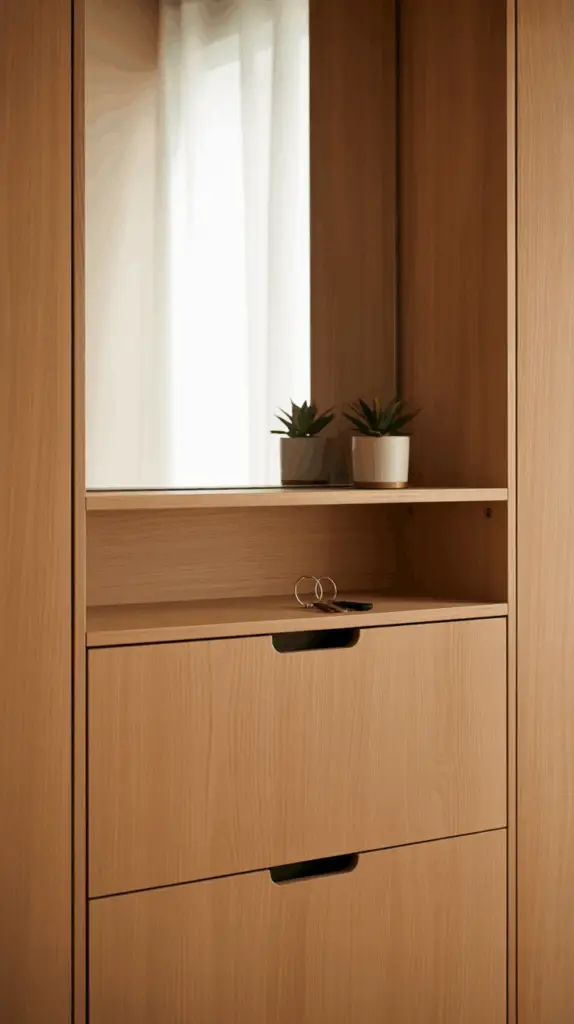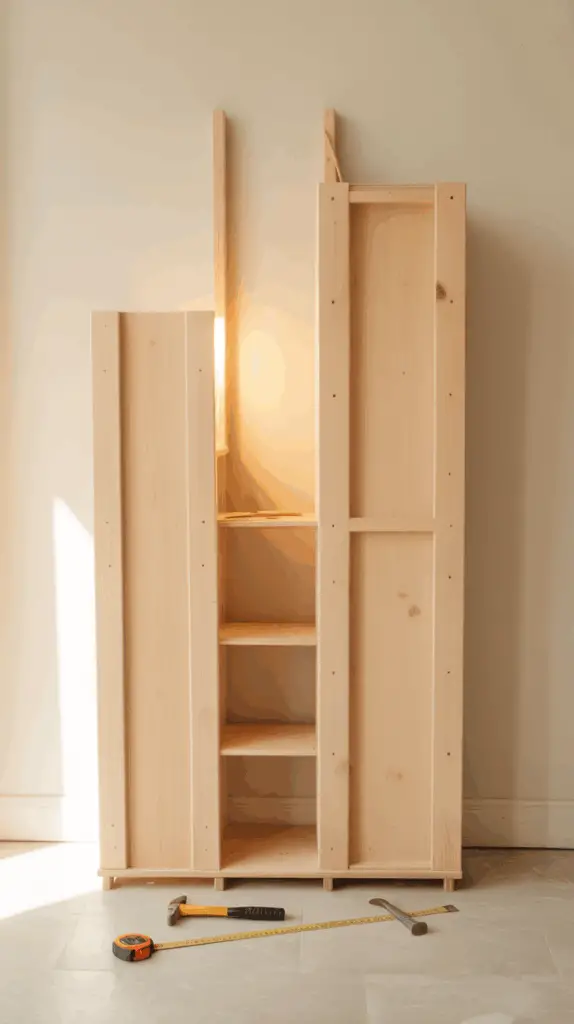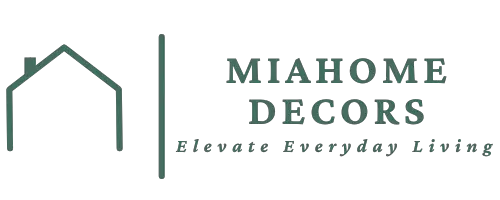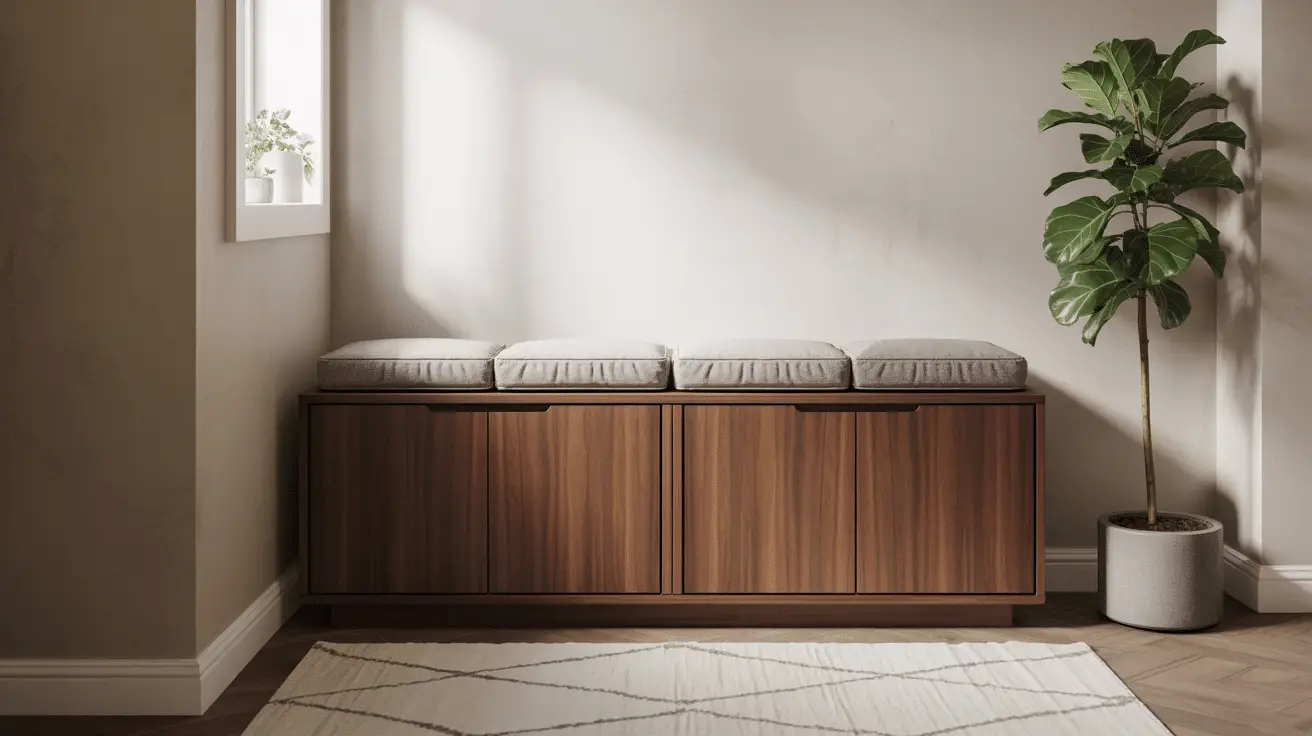DIY Entryway Shoe Storage Cabinet Ideas to Hide Clutter and Maximize Style
Table of Contents
Introduction
Is your entryway the first impression you’d like guests to have—or a jumble of shoes that tells a different story? For many households, the entryway is a functional hub where shoes, bags, and everyday clutter tend to pile up fast. In fact, studies show that the average family owns over 19 pairs of shoes per person. Without a smart system in place, keeping them organized is nearly impossible.
That’s where a DIY entryway shoe storage cabinet becomes a game-changer. It’s more than just a place to toss your sneakers—it’s a clever blend of form and function that conceals chaos while elevating your home’s design. Whether your style is modern, rustic, or minimalist, a shoe cabinet can be tailored to suit your space and needs.
In this post, we’ll explore how to build or customize your own entryway shoe cabinet, ideas for hidden storage solutions, tips for styling the space, and creative hacks to maximize functionality in even the tightest of foyers. Say goodbye to entryway mess and hello to a beautiful, organized welcome home.
Why You Need a Shoe Cabinet in Your Entryway
An entryway shoe cabinet isn’t just about keeping the space clean—it’s about creating calm from the moment you walk through the door. Shoes left out in the open can instantly make even the most stylish home feel disorganized. And for smaller homes or apartments, wasted entryway space is a missed opportunity.
A shoe cabinet allows you to take control of the clutter, store footwear neatly out of sight, and even double as a decorative or functional surface. Some cabinets include cushioned seating, drawers, or hidden compartments that offer more than just shoe storage—they become a command center for everyday life.
Moreover, closed storage protects shoes from dust, pets, and damage while improving airflow in narrow or high-traffic areas. It also encourages good habits for both adults and children, making it easy to maintain a clean threshold.
Benefits of a Shoe Storage Cabinet
| Benefit | What It Solves |
| Clutter Control | Keeps entry neat and organized |
| Protects Footwear | Shields from dust, dirt, and pets |
| Multi-functional | Offers seating, surface area, or extra compartments |
| Enhances Aesthetic Appeal | Completes the look of your entryway |
| Encourages Routine | Makes putting shoes away easy and accessible |
Designing Your DIY Shoe Cabinet: Choosing Function and Form
Before you build or assemble your cabinet, it’s important to think through the functionality you need and the design you want. Every home has a different flow, and your entryway setup should serve your lifestyle as much as your aesthetic.
Start by evaluating how many shoes you need to store and whether you want open shelving, closed doors, drawers, or a combination. Closed doors offer the cleanest look, especially if you’re housing a mix of shoes for all seasons or guests. Drawers work well for flats and sandals, while cubbies suit boots or bulky shoes.
Next, consider materials. Wood gives a timeless, warm finish, while metal offers an industrial edge. If your entryway is small, lighter woods or painted finishes in white or soft gray can help reflect light and keep things feeling open. Don’t forget ventilation—slatted doors or backless shelving can help reduce odors and moisture buildup.
Design Options Overview
| Cabinet Feature | Pros | Best For |
| Closed Doors | Hides clutter, sleek look | Modern or minimalist homes |
| Open Shelves | Easy access, budget-friendly | Busy families, small spaces |
| Drawers or Pull-Out Trays | Keeps pairs neat, no stacking | Flats, kids’ shoes, sandals |
| Bench Top | Adds seating and function | Narrow foyers or mudrooms |
| Adjustable Shelves | Flexible storage for all shoe types | Mixed shoe sizes or collections |

Step-by-Step Guide to Building a DIY Shoe Cabinet
Building your own entryway shoe cabinet might sound daunting, but it can be a straightforward and rewarding project—especially if you tailor it to your specific space and needs. Whether you’re customizing a flat-pack unit or starting from scratch with wood and screws, these steps will walk you through the process.
1. Measure Your Space:
Take precise measurements of your entryway, noting the depth, width, and height available. Consider walkways, nearby doors, and wall fixtures.
2. Plan the Layout:
Sketch or use a design tool to envision your cabinet. Decide how many shelves you need, whether you want drawers or baskets, and how much space you need for taller shoes or boots.
3. Choose Your Materials:
Plywood, MDF, or solid wood are all strong candidates. Choose materials based on your desired finish and how visible the piece will be.
4. Cut and Assemble:
Cut panels to size and assemble the base structure first, followed by internal shelves, dividers, and the top. Use wood glue and screws for durability.
5. Add Doors and Hardware:
Install hinges, handles, or push-to-open mechanisms. Slatted or louvered doors are ideal for ventilation while keeping shoes hidden.
6. Paint or Stain:
Finish with a coat of paint or wood stain that complements your home’s decor. Use sealant to protect the surface from scuffs or moisture.
7. Style It:
Top your cabinet with a cushion for seating, a catch-all tray for keys, or seasonal decor to make the space inviting.
DIY Build Summary
| Step | Tools Needed | Time Estimate |
| Measuring and Sketching | Tape measure, pencil, graph paper | 30 minutes |
| Cutting and Assembly | Saw, drill, wood glue, screws | 2–4 hours |
| Finishing and Styling | Sandpaper, paint/stain, handles | 1–2 hours |

Creative Ways to Hide Shoes in Plain Sight
Not every home has space for a full cabinet—but that doesn’t mean you have to live with shoe clutter. With a few clever design tweaks, you can integrate storage that looks intentional and stylish, even in the smallest entryways.
Use storage ottomans or benches with hidden compartments to combine seating with concealment. They work well in apartments or narrow hallways. If you’re short on floor space, vertical solutions like tall cabinets or stacked cubbies can house more shoes without sacrificing square footage.
For homes with a modern or Scandinavian vibe, try using baskets or bins made from natural materials like rattan or seagrass. These can slide under a bench or console and keep shoes grouped by person or type. Labeled bins not only add a touch of organization but also look aesthetically pleasing.
Wall-mounted cabinets or floating shelves with a hinged front are great for shoe drop zones in ultra-tight entryways. And if you’re open to visibility, sleek clear-front cabinets or metal mesh doors can offer a contemporary take while still concealing mess.
Hidden Shoe Storage Ideas
| Storage Solution | Best Placement | Design Benefit |
| Storage ottoman/bench | Beneath coat hooks or mirror | Offers dual-purpose function |
| Tall narrow cabinet | Entry corner or beside door | Maximizes vertical space |
| Baskets under console | Along hallway wall | Keeps items sorted and mobile |
| Wall-mounted flip-down | Tight wall space or nook | Compact and space-saving |
Adding Style with Accessories and Finishing Touches
Once your shoe cabinet is functional, it’s time to make it stylish. Accessories and design elements elevate the entryway from merely practical to polished and welcoming. Even small additions can enhance the space dramatically.
Top your cabinet with a soft seat cushion in a complementary fabric or neutral tone. Add a mirror above the cabinet to visually expand the space and provide a last-minute outfit check. Decorative trays, small vases, or framed art can make the cabinet feel like an intentional part of your home’s design.
Hooks on the wall above or beside the cabinet offer space for coats, bags, or hats—perfect for streamlining your morning routine. A narrow rug beneath the cabinet can add warmth and color, especially in wood or tile-floored foyers.
Plants or greenery add life and softness to the space. Choose a small potted plant or low-maintenance faux greenery for an easy, low-effort upgrade.
Style Enhancer Checklist
| Accessory | Purpose | Style Tip |
| Mirror | Expands light, adds function | Choose round or arched for softness |
| Hooks | Provides storage for outerwear | Match with cabinet hardware finishes |
| Tray or basket | Organizes keys and mail | Choose one with texture (woven, metal) |
| Rug or runner | Adds comfort and color | Keep low-pile for easy cleaning |
Conclusion
A DIY entryway shoe storage cabinet does more than just keep your space tidy—it sets the tone for the entire home. By combining smart storage solutions with thoughtful design, you create a space that’s both beautiful and efficient. Whether you build your cabinet from scratch or personalize a simple unit with clever tweaks, the results are transformative.
Through hidden compartments, functional layouts, and warm, welcoming styling, your entryway becomes more than a pass-through—it becomes a daily moment of calm and order. With a little creativity and the right design plan, you can finally reclaim your front door space and make a first impression that truly reflects your style.

